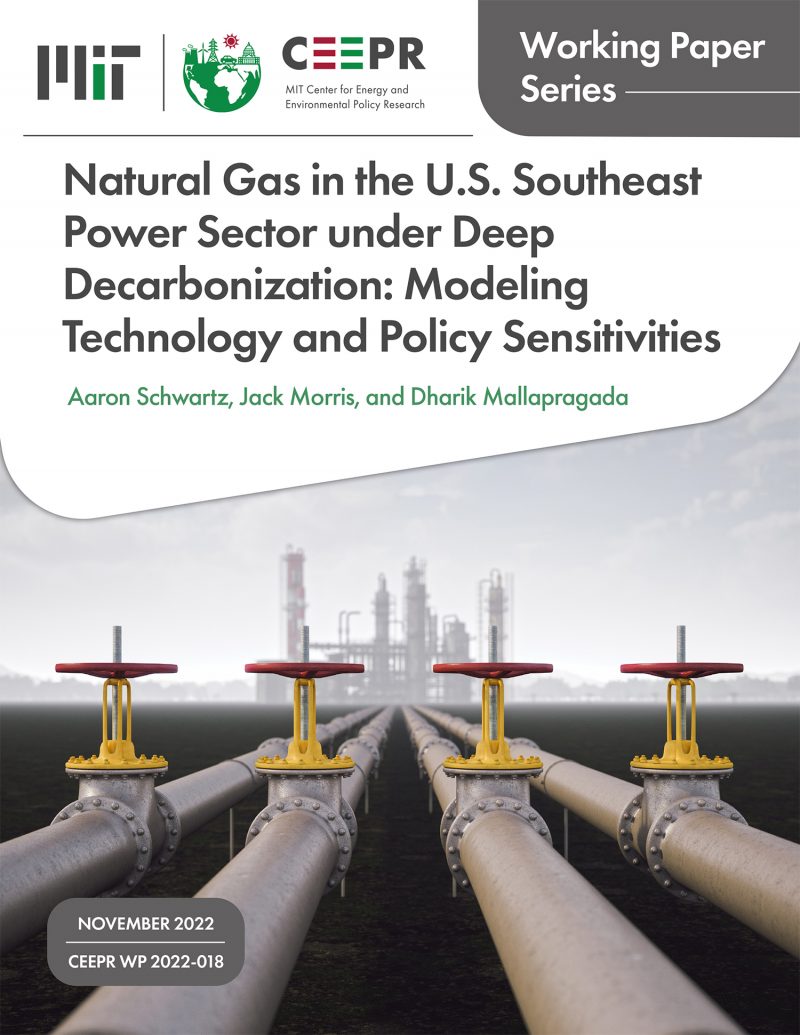Natural Gas in the U.S. Southeast Power Sector under Deep Decarbonization: Modeling Technology and Policy Sensitivities
Aaron Schwartz, Jack Morris, and Dharik Mallapragada
November 2022
Concerns over climate change, along with falling costs of renewable energy technologies, have led to increased scrutiny over the role of natural gas in a low-carbon energy future. In this study, we use a multi-stage capacity expansion modeling framework to evaluate the role of natural gas-fired power plants (NG) in the evolving electrical grid of the U.S. Southeast. Under assumptions of perfect foresight and high electrification, our modeling considers cost-optimal grid operations, investments, and retirements through 2045 using a detailed representation of the U.S. Southeast’s electrical grid which includes inter-region transmission, variable renewable energy resource characteristics, brown field capacity, and lifetime and economic retirements. We explore the impact of key technology and policy sensitivities including three alternative CO2 emissions trajectories, technology costs, nuclear plant lifetime extensions, upstream methane emissions, and direct regulations of NG deployment and financing. In addition to the unprecedented deployments of variable renewable energy and battery storage necessary to decarbonize, we find that investments in NG are made across all scenarios evaluated. Results highlight the substantial emissions contributions of the existing coal fleet and the potential for emissions reductions if lower-carbon generation resources, including new NG with and without carbon capture and storage, can replace this capacity. Furthermore, emissions limits which require the lowest mid-century CO2 emissions do not necessarily lead to the greatest cumulative emissions reductions over the planning horizon. Finally, we observe that large differences in technology and policy conditions result in only modest changes in capacity deployments and the cost of the energy transition, allowing utilities and regulators to move forward with confidence under a strategy primarily characterized by phasing out coal generation and deploying new renewable energy. These results support nuanced approaches to resource planning for future low-carbon grids which consider both short-term and long-term trade-offs of cost and emissions reductions.



